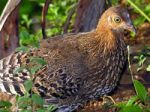History
Sigiriya may have been inhabited through prehistoric times. It was used as a rock-shelter mountain monastery from about the 5th century BC, with caves prepared and donated by devotees to the Buddhist Sangha. The garden and palace were built by Kashyapa. Following Kasyapa’s death, it was again a monastery complex up to about the 14th 
 century, after which it was abandoned. The ruins were discovered in 1907 by British explorer John Still. The Sigiri inscriptions were deciphered by the archeologist Paranavithana who published a renowned two volume work, published by Oxford, known as “Sigiri Graffiti”. He also wrote the popular book “Story of Sigiriya”.
century, after which it was abandoned. The ruins were discovered in 1907 by British explorer John Still. The Sigiri inscriptions were deciphered by the archeologist Paranavithana who published a renowned two volume work, published by Oxford, known as “Sigiri Graffiti”. He also wrote the popular book “Story of Sigiriya”.
Legends of the site’s origins
The Mahavansa, the ancient historical record of Sri Lanka, describes King Kasyapa as the son of King Dhatusena. Kasyapa murdered his father by walling him alive and then usurping the throne which rightfully belonged to his brother Mogallana, Dhatusena’s son by the true queen. Mogallana fled to India to escape being assassinated by Kasyapa but vowed revenge. In India he raised an army with the intention of returning and retaking the throne of Sri Lanka which was rightfully his. Knowing the inevitable return of Mogallana, Kasyapa is said to have built his palace on the summit of Sigiriya as a fortress and pleasure palace. Mogallana finally arrived and declared war. During the battle Kasyapa’s armies abandoned him and he committed suicide by falling on his sword. Chronicles and lore say that the battle-elephant on which Kasyapa was mounted changed the course just to get to a better fighting position/place but the army misinterpreted it as the King fleeing. Thereafter the army abandoned the king altogether. Moggallana returned the capital to Anuradapura and turned Sigiriya into a monastery complex.
Alternative stories have the primary builder of Sigiriya as King Dhatusena, with Kasyapa finishing the work in honour of his father. Still other stories have Kasyapa as a playboy king, with Sigiriya a pleasure palace. Even Kasyapa’s eventual fate is mutable. In some versions he is assassinated by poison administered by a concubine. In others he cuts his own throat when isolated in his final battle.
Still further interpretations have the site as the work of a Buddhist community, with no military function at all. This site may have been important in the competition between the Mahayana and Theravada Buddhist traditions in ancient Sri Lanka.[2]
Location
The site located in Central Province, Matale District(N7 57 00)(E80 45 00) co-ordinates. [3]
Setting and archeological remains
Sigiriya rock is the hardened
magma plug from an extinct and long-eroded
volcano. It stands high above the surrounding plain, visible for miles in all directions. The rock rests on a steep mound that rises abruptly from the flat plain surrounding it. The rock itself rises 370m and is sheer on all sides, in many places overhanging the base. It is elliptical in plan and has a flat top that slopes gradually along the long axis of the ellipse.
[4]Sigiriya consists of an ancient castle built by King Kasyapa during the 5th century AD. The Sigiriya site has the remains of an upper palace sited on the flat top of the rock, a mid-level terrace that includes the Lion Gate and the mirror wall with its frescoes, the lower palace that clings to the slopes below the rock, and the moats, walls and gardens that extend for some hundreds of metres out from the base of the rock.
The site is both a palace and fortress. Sufficient remains to provide the visitor with a stunning insight into the ingenuity and creativity of its builders.
The upper palace on the top of the rock includes cisterns cut into the rock that still retain water. The moats and walls that surround the lower palace are still exquisitely beautiful.
Main features
Sigiriya is considered as one of the most important sites of urban planning of the first millennium, the site plan is considered very elaborate and imaginative. The planning had combined concepts of symmetry and asymmetry to intentionally interlock the geometrical plan and the natural form of the surroundings. The west side of the rock lies a park for the royals which is symmetrically planned, the park contains water retaining structures which includeds sophisticated sub/surface hydraulic systems of which some are working even today. The south contains a man made reservoir, these were extensively used from previous capital of the dry zone of Sri Lanka. Five gates were places as entrances the more elaborate western gate is thought to be reserved for the royals.[5] [6] [7]
Read Full Post »













